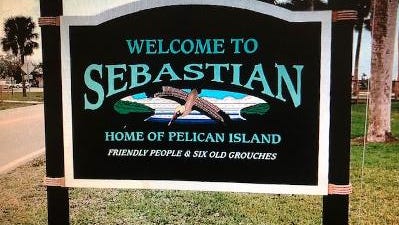
SEBASTIAN — There was little controversy at Wednesday City Council workshop, called to discuss the revised annexation agreement between the city and Graves Brothers Co., which wants to annex 2,044 acres of citrus land into the city.
It’s the second version of the agreement presented to the public, and similar to the Nov. 23 draft that called for a mix of medium-density housing on the property with up to 10 units per acre.
In the revised plan, a 10% mandate for the developer to build affordable housing on the property has been reduced to “at least 5% and up to 10% of the dwelling units,” a change that didn’t sit well with Indian River Neighborhood Association Executive Director Dan Lamson.
The need for affordable housing
Having more affordable housing is something Sebastian and the county really needs,” said Lamson. “If you don’t force affordable housing to happen, if you don’t require it, then it probably won’t because you don’t make as much money.
“We need affordable housing and workforce housing, and this would be a great place for it,” said Lamson. “There’s going to be some growth there and development, and so I would encourage you to keep that in mind as you move forward.”
George Glenn Jr., an attorney representing the Pelican Island Audubon Society and other environmental groups, said the definition of “connected green infrastructure” had been changed in the latest draft agreement, replacing the word “required” with “encouraged.”
“When you require something, it is fundamentally different than when you encourage something,” said Glenn. “The connected green infrastructure was important because you’re including storm water retention areas as your open space. It’s easy to get to 50% (of open space) when you’re including that. It has more meaningful impact as far as qualities to the environment when it is part of a connected green infrastructure.”
The property would be developed through a planned unit development process as required under the city land-development code. In the new draft, the size of each subdivision has been reduced to 400 acres from the originally-proposed 500 acres.
Maximum number of houses remains the same
The maximum number of houses that could be developed on the property remains at 10,771, according to Councilman Ed Dodd.
“However, that’s not what’s going to be there,” said Dodd. “This agreement does do some development parameters and is, in fact, a layout for conditions that are being placed on the entire 2,000-acres of property. We’re just trying to put a minimum limit on what we feel like we want to have some control over through the (development) process.”
If approved by the City Council, the plan would allow a broad mix of housing options, including townhomes, single-family and rental homes and uses such as childcare, schools, cultural and civic facilities, nursing homes, parks, utilities, office and shopping.
The annexation is expected to be considered by the City Council at its Feb. 8 meeting.